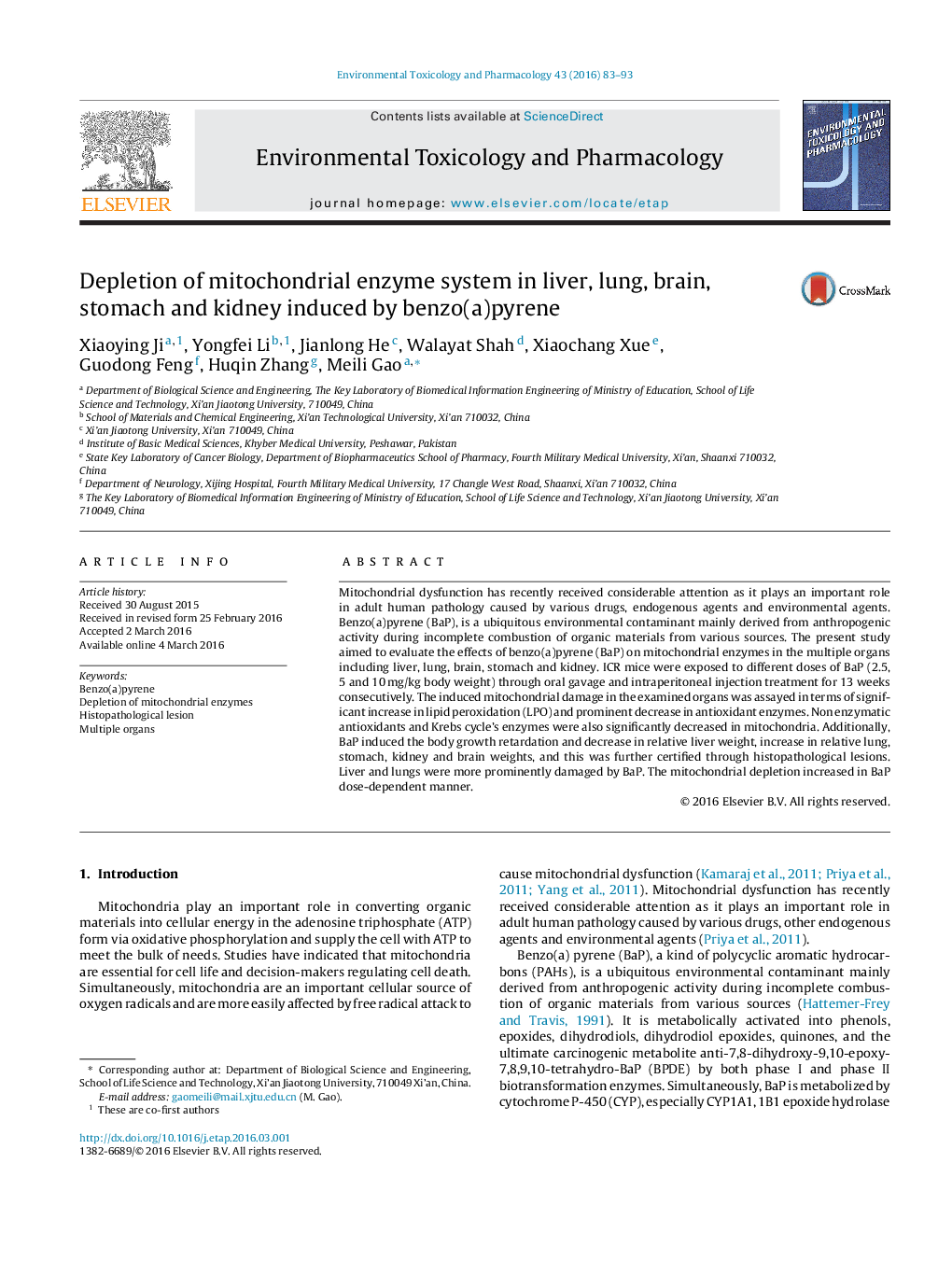| Article ID | Journal | Published Year | Pages | File Type |
|---|---|---|---|---|
| 2582756 | Environmental Toxicology and Pharmacology | 2016 | 11 Pages |
•Significant increase in lipid peroxidation (LPO) and prominent decrease in antioxidant enzymes were induced by BaP.•Non enzymatic antioxidants and Krebs cycle’s enzymes were significantly decreased in mitochondria.•The rate of body weight increase was retarded and the disturbance of tissue homeostasis was induced by BaP.•Subchronic BaP exposure results in an organ-independent response.
Mitochondrial dysfunction has recently received considerable attention as it plays an important role in adult human pathology caused by various drugs, endogenous agents and environmental agents. Benzo(a)pyrene (BaP), is a ubiquitous environmental contaminant mainly derived from anthropogenic activity during incomplete combustion of organic materials from various sources. The present study aimed to evaluate the effects of benzo(a)pyrene (BaP) on mitochondrial enzymes in the multiple organs including liver, lung, brain, stomach and kidney. ICR mice were exposed to different doses of BaP (2.5, 5 and 10 mg/kg body weight) through oral gavage and intraperitoneal injection treatment for 13 weeks consecutively. The induced mitochondrial damage in the examined organs was assayed in terms of significant increase in lipid peroxidation (LPO) and prominent decrease in antioxidant enzymes. Non enzymatic antioxidants and Krebs cycle’s enzymes were also significantly decreased in mitochondria. Additionally, BaP induced the body growth retardation and decrease in relative liver weight, increase in relative lung, stomach, kidney and brain weights, and this was further certified through histopathological lesions. Liver and lungs were more prominently damaged by BaP. The mitochondrial depletion increased in BaP dose-dependent manner.
